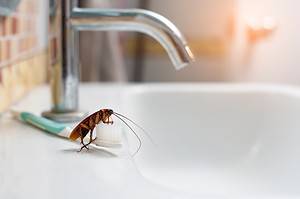Cockroach species, for most, evoke an instant gut reaction of disgust and revulsion. They’re closely related to termites, and most species favor tropical climates. They’ve been around for a long time—around 300 million years to be exact. Here, we’ll learn more about the cockroaches of the world; what they look like, and how many species there are. Then, we’ll take a closer look at a few of the most common, and best well known, species.
What Is a Cockroach?
Cockroaches are medium sized, beetle-like insects. They have six legs and two long antennae the length of their entire body. Most are dark brown, red brown, or amber brown in color. They begin life as an egg before hatching into a nymph—a baby cockroach. Then, they shed their exoskeleton (molt) a few times—how many times depends on the species—as they grow into adulthood.
How Many Species of Cockroach Are There?
Cockroaches are one of the most prolific insect species on the planet. The name ‘cockroach’ refers to any one of the approximately 4,500 species within the Dictyoptera superorder. Out of those 4,000+ species, only about 30 live near, or with, humans. A few more, like the Madagascar hissing cockroach and the death’s head cockroach, have become famous because of their unique attributes, though they don’t naturally live among people. Here, we’ll take a look at the most common, and the most famous, species.
The Four Most Common Household Cockroach Species
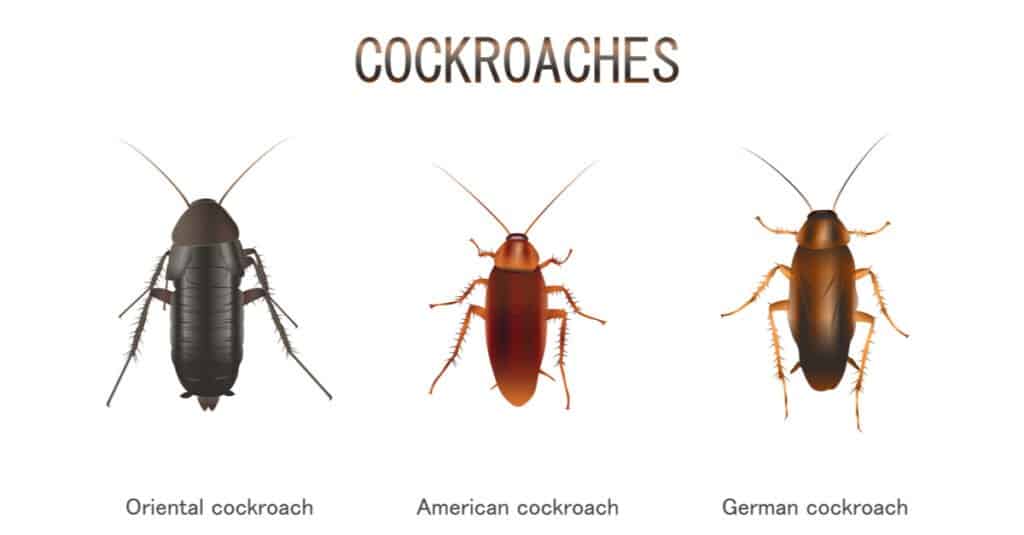
While there are over 4,000 species of cockroach, only about 30 of them live near humans
©pablofdezr/Shutterstock.com
The four species of cockroaches that are most commonly found near humans include:
German Cockroach

German cockroaches
are the most common urban type of cockraoch
©IrinaK/Shutterstock.com
- (Blattella germanica) This is the most common species of urban cockroach
- Adults are ½ inch long and colored light brown with two dark brown bands on the back of the head
- This species can be found in multi-unit housing structures, near food preparation and storage areas, and near plumbing fixtures
- They excrete a foul smelling liquid that leaves a stain
Brown-Banded Cockroach
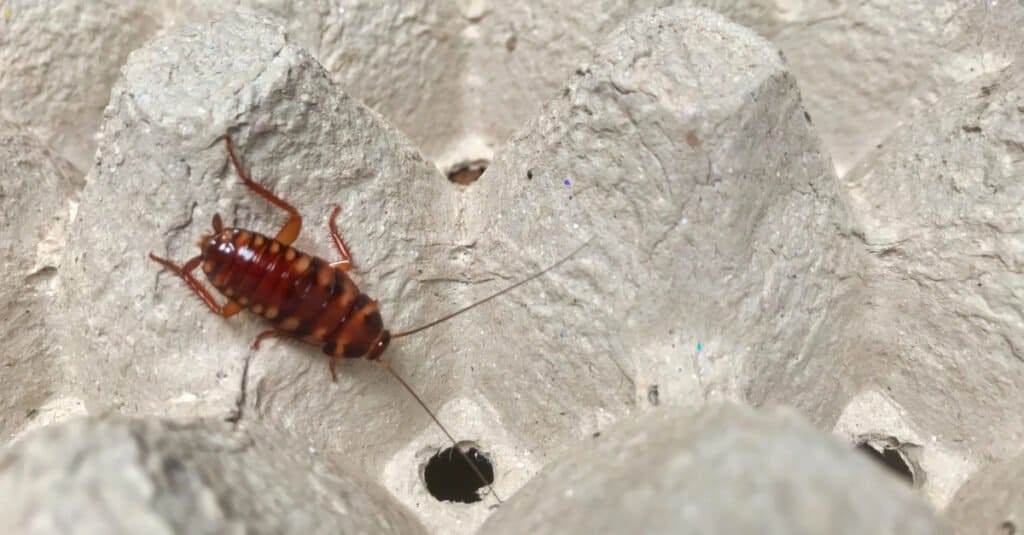
Brown-banded cockroaches live in hot climates.
©Freedom my wing/Shutterstock.com
- (Supella longipalpa) This cockroach species prefers hot temperatures (over 80 degrees)
- They can be found on/under electric appliances, behind pictures hung on the walls, under furniture, and in household clutter
- Adults are ½ inch long; males have narrow bodies and amber coloring with dark brown markings, females have wider, dark brown bodies with amber markings
- These cockroaches tend to jump when startled
American Cockroach
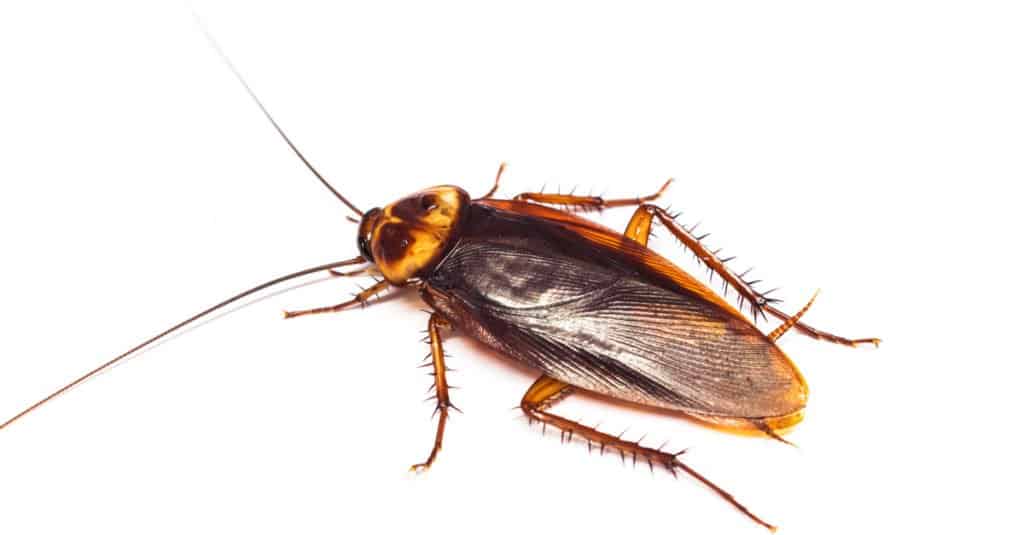
American cockroaches prefer environments where food is prepared.
©watchara panyajun/Shutterstock.com
- (Periplaneta americana) This species prefers first floor restaurants and other areas where food is prepared
- Adults are up to two inches long and have body length wings
- They’re red brown in color, with a yellow band on the back of the head
- These cockroaches can live up to three years
Oriental Cockroach
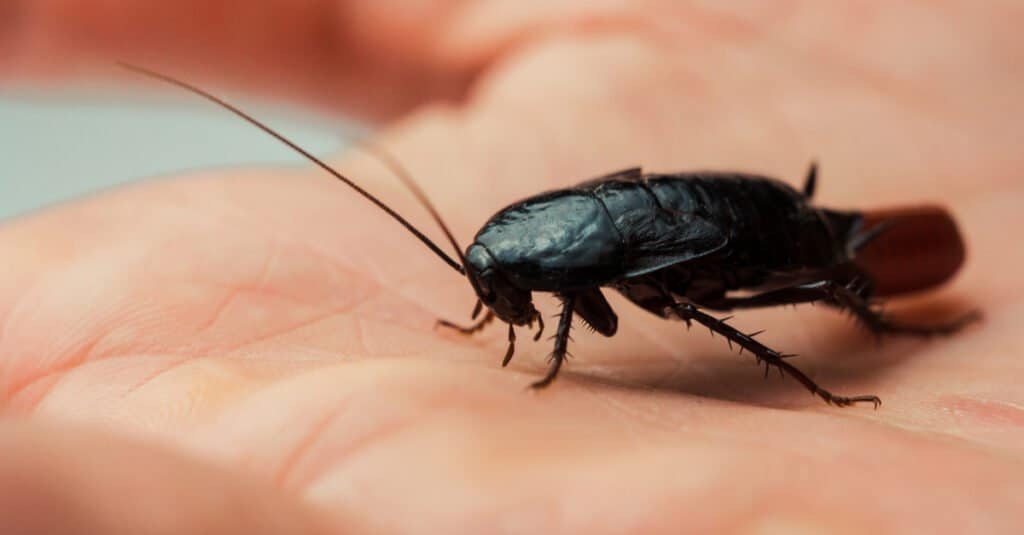
Oriental cockroaches have a potent smell and are often found near sewage.
©Yuliia Hurzhos/Shutterstock.com
- (Blatta orientalis) These cockroaches can be found inside and outdoors; they can survive cold weather
- Adults are up to 1 ¼ inches long and colored very dark brown
- This species is widely considered the ‘dirtiest’ cockroach because of its potent smell and predilection for garbage and sewage
- They stay in the nymph stage for up to three years, but live only six months after attaining adulthood
15 More Cockroach Species
Australian Cockroach
- (Periplaneta australasiae) This is the most common outdoor species in southern Florida
- Adults grow up to 1 ⅓ inches long and have fully functional wings
Australian Rhinoceros Cockroach
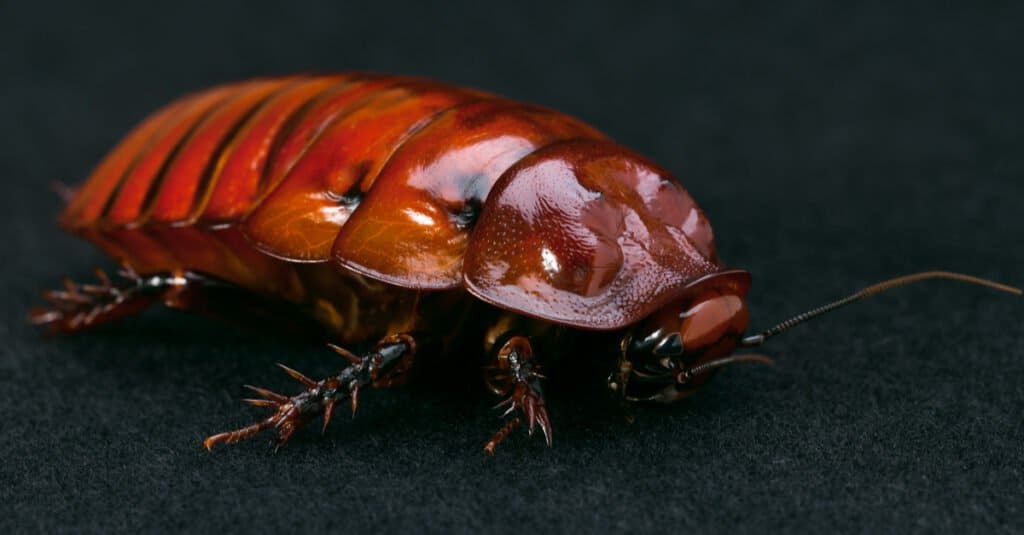
Australian burrowing cockroaches are among the largest cockroaches in the world.
©skydie/Shutterstock.com
- (Macropanesthia rhinoceros) This species can grow to over three inches long and has a lifespan of over ten years
- They spend most of their lives underground and hiss when threatened
Central American Giant Cockroach
- (Blaberus giganteus) This species is one of the largest cockroaches in the world; females can grow to four inches long
- They’re light brown with body length wings and distinct, dark brown markings on the back of the head
Turkestan Cockroach
- (Blattidae lateralis) One of the most popular cockroach species for feeder cockroaches (cockroaches that are bred as food for exotic pets)
- They are very light brown in color with body length wings and can grow to one inch long
Pennsylvania Wood Cockroach
- (Parcoblatta pennsylvanica) These cockroaches normally live outside, preferring woods, rotting vegetation, and firewood
- They can grow to one inch; males are light brown, while females are darker brown
Three-lined Cockroach
- (Luridiblatta trivittata) One of the smallest species of cockroach; adults are only ¼ inch long
- Very light brown with distinct dark brown bands running the length of its body; this species has no wings
Field Cockroach
- (Blattella vaga) This species prefers to live outdoors in dense vegetation, like leaf piles
- Adults grow to ½ long and are light brown with dark brown stripes on the back of the head
Dubia Cockroach
- (Blaptica dubia) Also called the tropical spotted roach; they are very popular feeder cockroaches
- Adults grow up to 1 ¾ inches long and are dark brown; males have functioning wings, while females have only vestigial wings
Madagascar Hissing Cockroach

Madagascar hissing cockroaches
are well known for their hissing
©Keith Muzzioli/Shutterstock.com
- (Gromphadorhina portentosa) One of the most famous species of cockroach; they can grow up to three inches long and an inch wide
- This species is known for hissing when threatened
Florida Woods Cockroach
- (Eurycotis floridana) Also called palmetto bug; this cockroach species is prevalent in the southeastern United States
- Adults grow to 1.5 inches long and are red brown to dark brown in color
Ghost Porcelain Cockroach
- (Gyna caffrorum) Also known as chrome cockroaches; this species is popular as a feeder bug
- Adults are dark brown with white markings that look like dusted flour
Death’s Head Cockroach
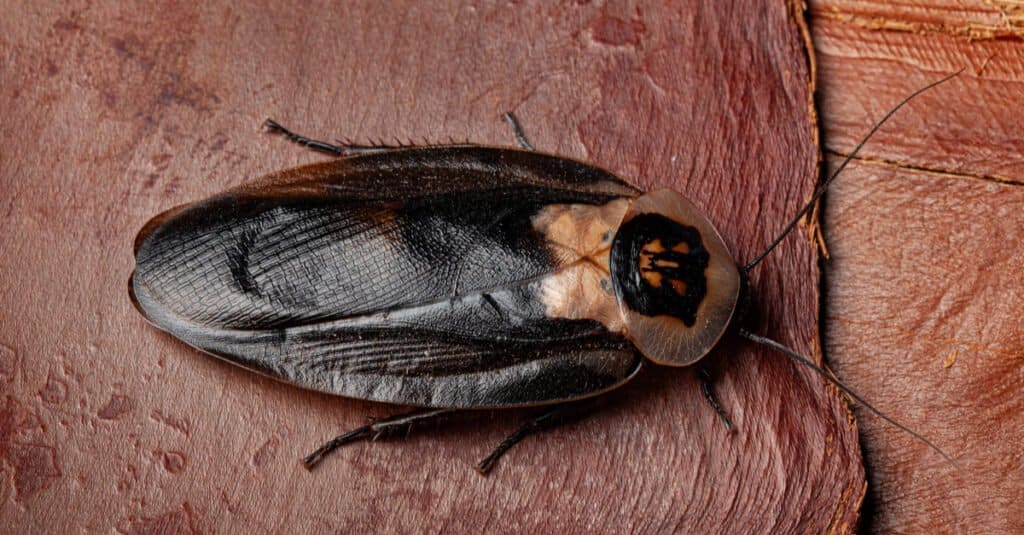
Death’s head cockroaches have incredible markings on the backs of their heads that look like skulls
©K Hanley CHDPhoto/Shutterstock.com
- (Blaberus craniifer) This species is a popular pet roach because of the distinctive, red markings on the backs of their heads
- Adults are black with yellow heads; nymphs are light brown with yellow, geometric markings
Surinam Cockroach
- (Pycnoscelus surinamensis) Also known as the greenhouse cockroach. This species lives outdoors and burrows underground during the day
- Adults are up to one inch long and have dark brown bodies with light brown wings
Domino Cockroach
- (Therea petiveriana) Also known as the desert cockroach, seven-spotted cockroach, and Indian domino cockroach
- Adults grow up to an inch long and have black bodies with seven white spots
Smokybrown Cockroach
- (Periplaneta fuliginosa) This species prefers to live outdoors in plants
- Adults grow up to 1.5 inches long and have red brown bodies with dark brown heads
The photo featured at the top of this post is © watchara panyajun/Shutterstock.com
Thank you for reading! Have some feedback for us? Contact the AZ Animals editorial team.





